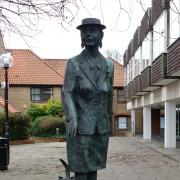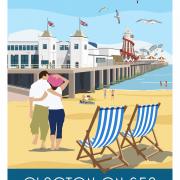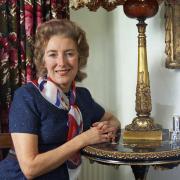In part two of Mica Bale’s series on unusual Essex tidbits we hear about Geoff Hurst’s appearance for Essex CCC, how Braintree was home to the UK’s first croccodile and where Billericay gets its name
1) Were you aware that the glorious Lady Mary from the hit television series Downton Abbey is actually an Essex girl?
The actress who plays the eldest Crawley daughter, Michelle Dockery, proudly hails from the county and has commented that, ‘I’m not like Lady Mary at all. For one thing, I’m not actually posh. I come from a very humble, working class background. I had a very strong Essex accent when I was younger.’
2) Did you know that the first crocodile in the UK lived in Braintree?
The botanist Richard Bradley, who was known for his eccentricity and lovable unreliability as well as some impressive steps forward in various scientific fields, brought a crocodile home with him in 1701, where it lived somewhere in the grounds of his Braintree residence!
3) Legendary footballer Sir Geoff Hurst will always go down in history for being the only man ever to score a hat-trick in the World Cup final, however did you know that the West Ham superstar also has Essex connections?
The striker spent some time living in Chelmsford after his family moved there when he was a boy. And before taking up football more seriously, he made one first-class cricket appearance for Essex CCC and at lower levels as wicketkeeper.
4) Essex has often been described as a county of contrasts, and just one example of this is that the county is home to both Tiptree, which stakes a claim to being England’s largest village, and Manningtree, which is a contender for being the UK’s smallest town!
Manningtree prospered through the wool trade in the 15th century, but is also notable for its connections to Margaret Thatcher who spent time in the town as a research chemist. She even met her future husband in Manningtree.
5) Were you aware that New Hall School in Boreham is located on the site of the former royal residence of Henry VIII and the childhood home of his later wife Anne Boleyn?
The king purchased the estate in 1516 for £1,000 and then built Beaulieu Palace. The estate enjoyed much royal attention for the centuries to come until it was turned into a school in 1799.
6) Did you know that Christopher Cockerell, the man responsible for inventing the hovercraft, lived with his wife in a cottage in Danbury for a number of years, the building now being Grade II listed?
During his time there, Cockerell worked on important radar systems and at the famed Marconi hut at Writtle.
7) Were you aware that Billericay was a major producer of watercress, even up until the 20th century, and it may be one reason for the origin of the town’s name since ‘billers’ is an old word for watercress?
The town saw impressive growth in the Georgian era and many of the finest examples of the time’s architecture can still be found in Billericay.
8) Think of Mesopotamia and immediately thoughts of exotic scenery and the many momentous episodes in the region’s history come to mind, however do you know that there is an Essex connection?
In fact, the county boasts its very own Mesopotamia located between the rivers Can and Chelmer in Chelmsford. While perhaps not as grand, the Essex site was once well known for hosting pretend elections in the Victorian era and would take a rather comedic look at the politics of the day.
9) With enviable good weather, lush landscapes and picturesque countryside, Essex is home to some of the UK’s most important wildlife species.
The adder is now the rarest reptile found in Essex. Danbury Common is the privileged home to the county’s biggest population of adders.
10) Did you know that Finchingfield Windmill is the oldest windmill in Essex? The county was renowned for its mills and it was not uncommon to see one mill neighbouring another on the horizon, although only a remnant remain today.
Finchingfield Windmill dates back to 1756, is Grade II listed and is one of seven that once stood in the village of Finchingfield.
Read more Essex facts: Part One
_______________



























